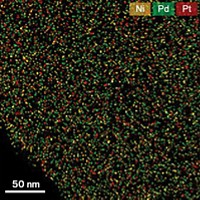Advertisement
Grab your lab coat. Let's get started
Welcome!
Welcome!
Create an account below to get 6 C&EN articles per month, receive newsletters and more - all free.
It seems this is your first time logging in online. Please enter the following information to continue.
As an ACS member you automatically get access to this site. All we need is few more details to create your reading experience.
Not you? Sign in with a different account.
Not you? Sign in with a different account.
ERROR 1
ERROR 1
ERROR 2
ERROR 2
ERROR 2
ERROR 2
ERROR 2
Password and Confirm password must match.
If you have an ACS member number, please enter it here so we can link this account to your membership. (optional)
ERROR 2
ACS values your privacy. By submitting your information, you are gaining access to C&EN and subscribing to our weekly newsletter. We use the information you provide to make your reading experience better, and we will never sell your data to third party members.
Materials
MOFs That Take The Heat And Keep Working
Catalysis: Metal-organic framework compounds show promise as thermally stable catalyst supports that resist sintering
by Mitch Jacoby
February 15, 2016
| A version of this story appeared in
Volume 94, Issue 7
Most of today’s industrial-scale chemical processes are catalyzed by metal or metal oxide particles dispersed on a handful of support materials, such as alumina, silica, and activated carbon. Metal-organic frameworks (MOFs) have attracted interest as catalyst supports, because unlike common supports they can be custom-designed to boost catalyst performance, for example by holding metal atoms on interior surfaces where they can better interact with molecules entering the framework. But most MOFs decompose below 300 °C, which is too low for many industrial processes, and they can’t tolerate extended reaction times. Two studies published by collaborative research teams from the University of Minnesota, Twin Cities; Northwestern University; and other institutions indicate that MOFs may yet have a future as robust catalyst supports. One study reveals that condensing tetramethylorthosilicate in the pores of MOF NU-1000 keeps the MOF’s oxozirconium clusters catalytically active, even after heating in air to 600 °C (J. Am. Chem. Soc. 2016, DOI: 10.1021/jacs.5b12688). The other study shows that a nickel-modified version of NU-1000 doesn’t deactivate, even after two weeks of continuous use as a hydrogenation catalyst (J. Am. Chem. Soc. 2016, DOI: 10.1021/jacs.5b12515).



Join the conversation
Contact the reporter
Submit a Letter to the Editor for publication
Engage with us on Twitter